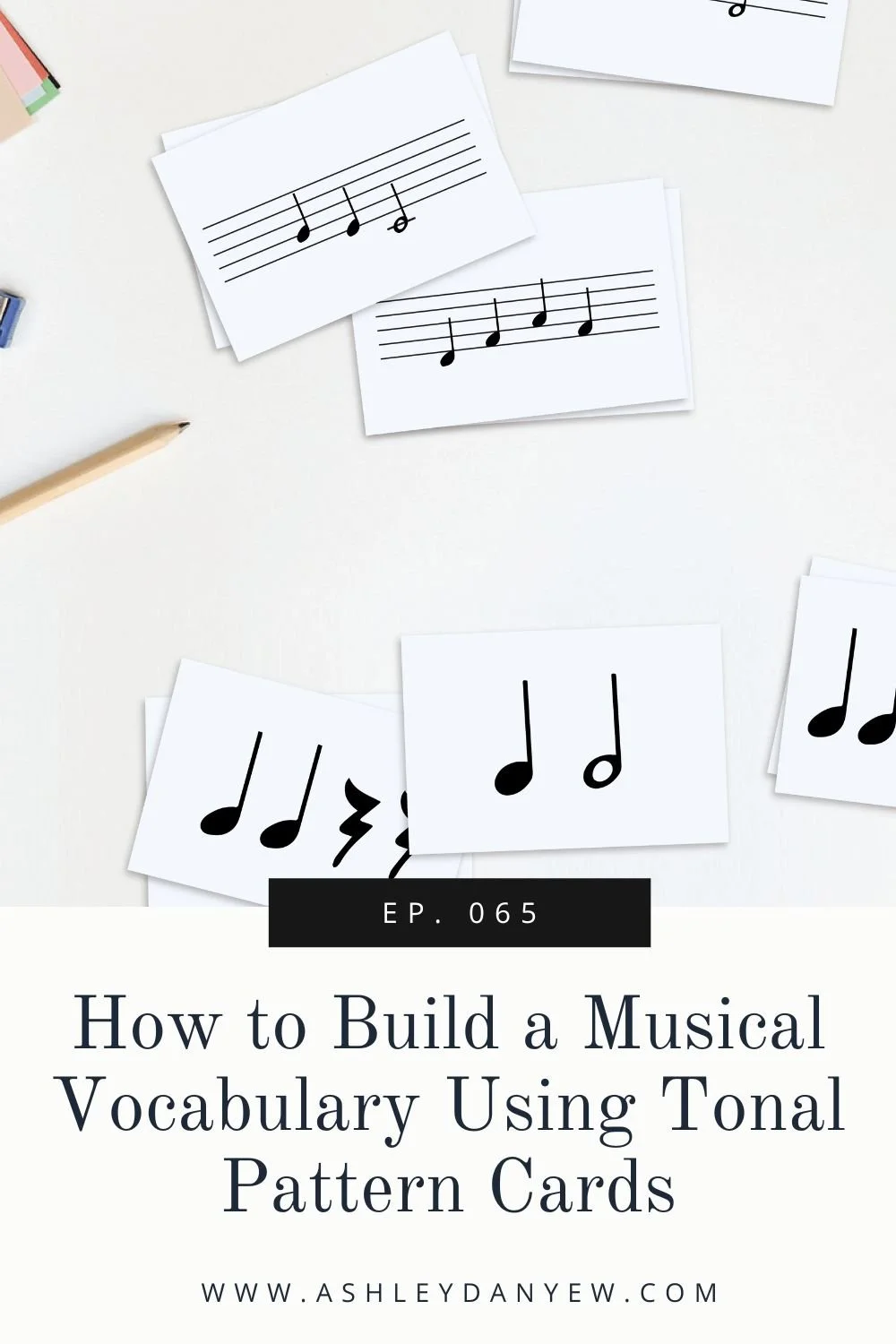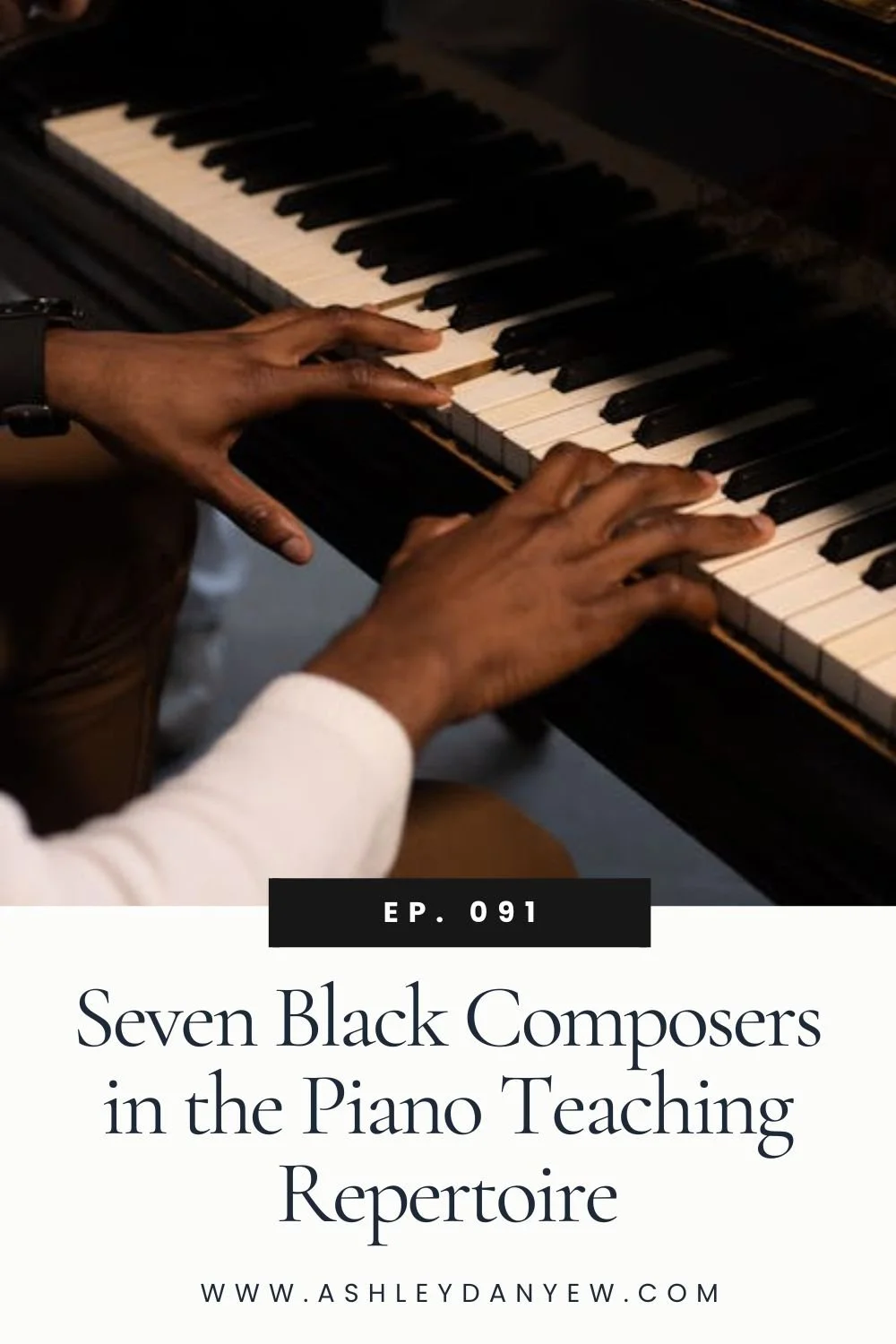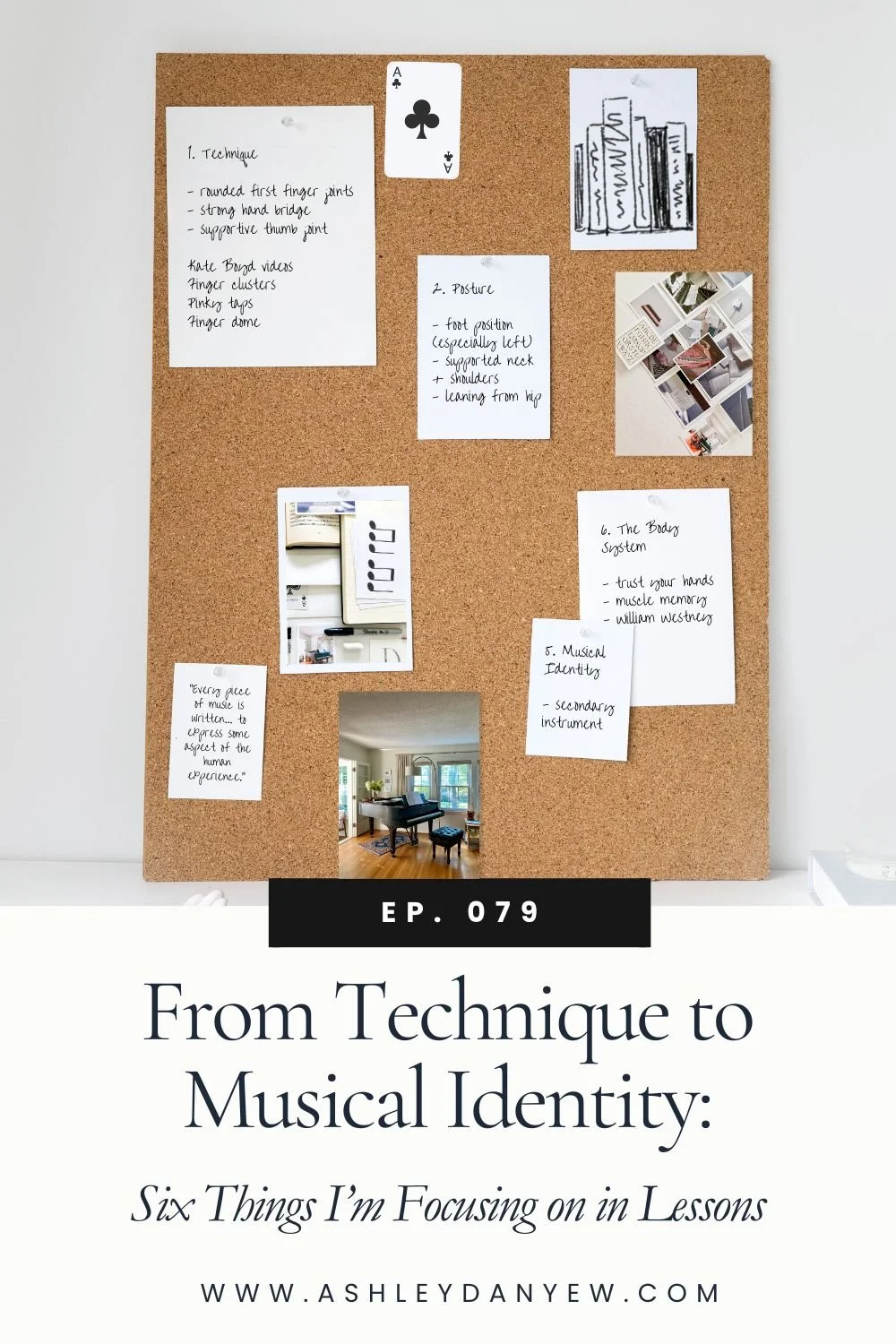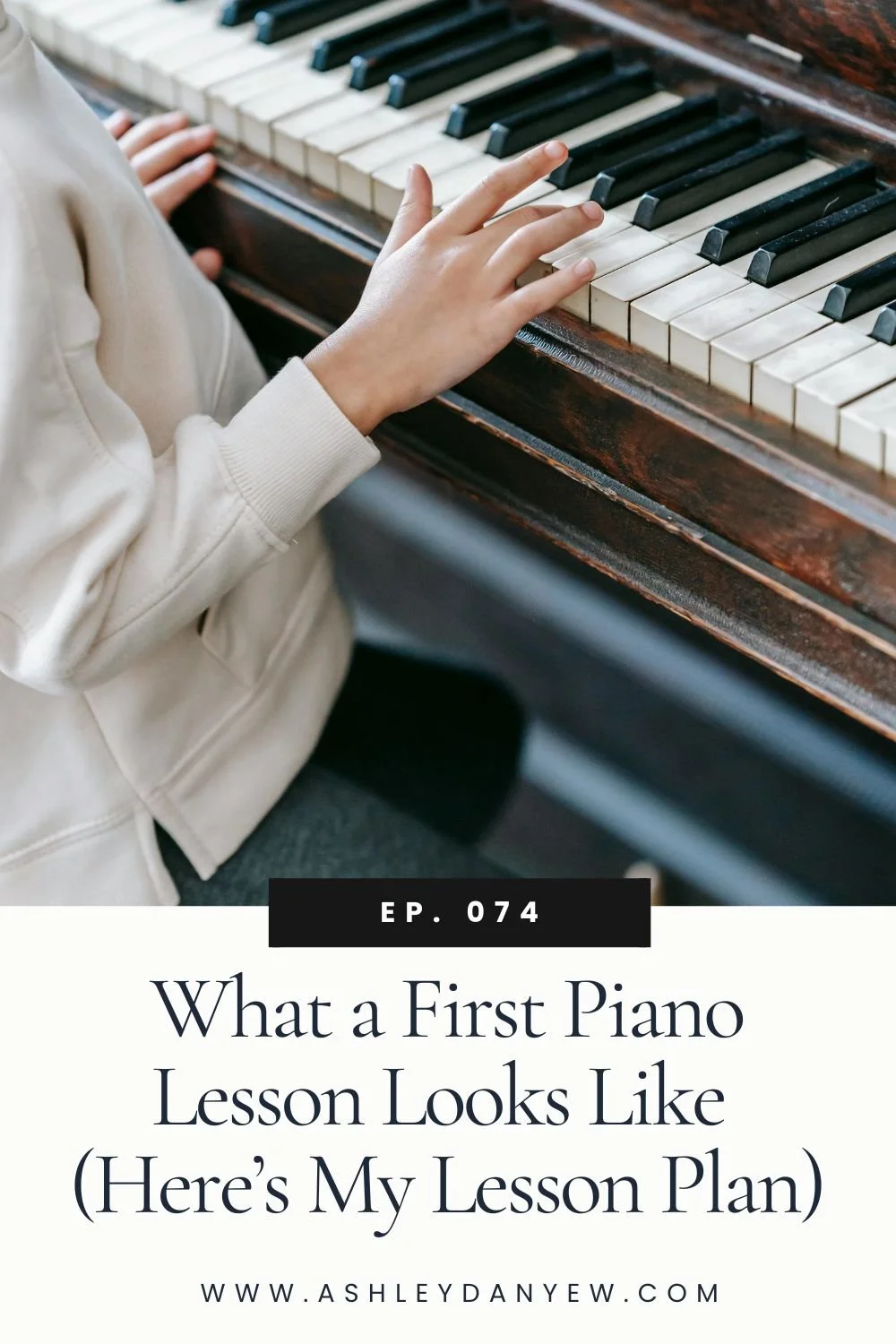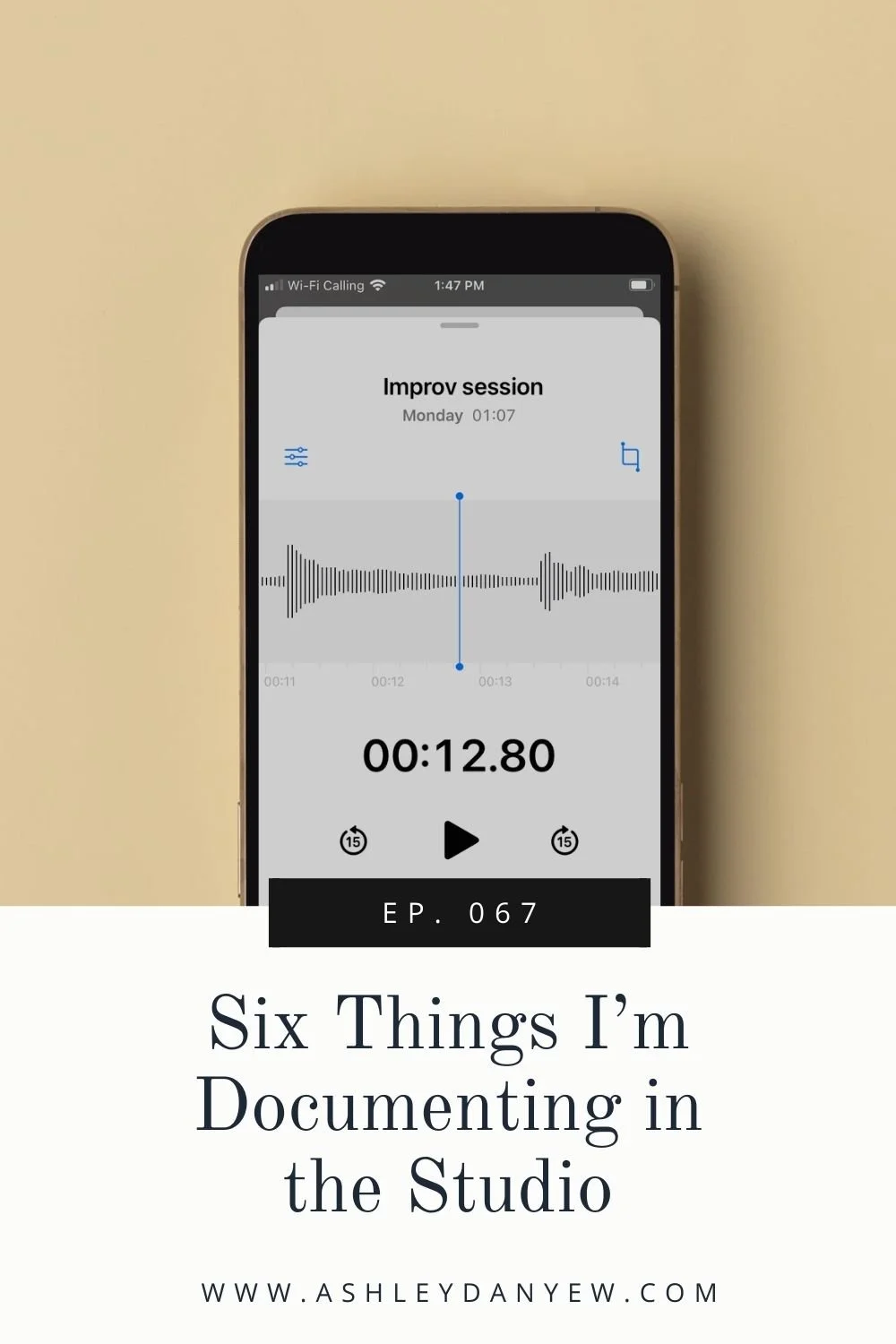I received an email from a listener recently, a piano teacher in North Carolina. She had purchased a set of my tonal pattern cards and was looking for ideas and suggestions for how to incorporate them into her teaching this year.
A few years ago, I created sets of rhythm pattern cards and tonal pattern cards based on Edwin Gordon's Music Learning Theory. I had studied this in grad school and thought it might be helpful to notate some of these patterns for teachers working with elementary students in lessons, music classes, children's choirs, etc.
This question from a listener prompted me to sit down and think through the importance of building a musical vocabulary (rhythm and tonal), how we learn to read music, and creative ways to engage our students through listening, pattern recognition, matching, imitating, and improvising using a basic set of tonal pattern cards.
In this episode, you'll learn about the mental process behind how we read music, the importance of reading patterns vs. individual notes, a 5-step sequence for musical skill development, and seven creative ideas for using tonal pattern cards in your teaching on a regular basis.
How We Learn to Read & How We Read Music
I attended an interesting and informative session at NCKP (the National Conference on Keyboard Pedagogy) this summer taught by Gregory Chase, an independent teacher based in Regina, Saskatchewan.
He shared a wonderful quote from a research study on the reading brain in kids by H. Korbey:
"Human brains weren't designed to read: there is no 'reading center' of the brain, and there are no 'reading genes.' Instead, in order to read, each brain must fashion new circuits between parts originally designed to do other things. . . .To become a fluent reader, the circuit also needs to run lightning-fast, nearly automatic."
Source: Korbey, H. (2015). Understanding dyslexia and the reading brain in kids. Retrieved from https://www.kqed.org/mindshift/41845/understanding-dyslexia-and-the-reading-brain-in-kids
Isn't that interesting? The brain is constantly building new circuits as we learn.
One of the tenets of the Music Learning Theory is that tonal and rhythm patterns are to music what words are to language. Instead of reading individual letters, we group letters together into meaningful words. The same is true in music: Instead of reading individual notes, we group them together into meaningful patterns.
Tonality is like syntax in language. In music tonality, we use major and minor, but also dorian, phrygian, lydian, mixolydian, aeolian, and locrian.
We also have tonal or harmonic functions such as tonic, dominant, subdominant, etc. similar to how we have nouns and adjectives and verbs in language.
What Are Tonal Patterns?
If you look at any beginning method book or simple folk song, you'll find musical patterns. In Western culture and American music more specifically, these beginning patterns are often in major or minor tonality and based on tonic, dominant, and subdominant functions. A tonal pattern should have at least two but no more than five pitches (repeated notes don't count). For example: Do-Mi-Sol, Fa-La-Fa, Sol-Fa-Re, Do-Mi-Do.
Hopefully, this gives you a little background on what tonal patterns are and how they function in the music-learning process.
How to Use Tonal Pattern Cards: A 5-Step Skill Learning Sequence
Let's talk now about some practical strategies for introducing these patterns in your teaching and helping your students develop a versatile musical vocabulary. Here's a helpful 5-step sequence:
Step 1 - Start aurally, without notation
First, start aurally without notation (you can use the tonal pattern cards for your reference). This is the Aural/Oral stage of the skill learning sequence in the Music Learning Theory—basically listening and responding. Start with a neutral syllable (just like you do when introducing rhythm patterns).
Step 2 - Name patterns, functions, and tonalities
Once students are familiar with the patterns introduced in the first phase, name the patterns, functions, and tonalities using solfége and labels such as tonic or dominant and major or minor. Gordon calls this the Verbal Association stage of the skill-learning sequence.
There are two ways to teach solfége: Fixed Do where C is always Do and the syllables are always tied to specific pitches and Movable Do where Do is the tonic note of whatever major key you're singing or playing in. In Movable Do, La is the tonic note for minor keys. Movable Do lends itself better to understanding tonality and function, so this is preferred in the Music Learning Theory.
Step 3 - Establish a tonal context
It's important when starting out to name the key and tonality (e.g. C major) before singing tonal patterns. This helps students develop discrimination skills between major and minor and helps them learn about function, as well. Establish tonality for students by playing I-V-I on the piano (or singing the outline of these chords).
Once you've practiced this together for a few weeks and students are in the Verbal Association stage of learning, perform a series of familiar tonal patterns without solfége and without establishing tonality and invite students to name the tonality. Gordon refers to this as the Partial Synthesis stage of skill learning.
Step 4 - Introduce notation
Once students have experienced the patterns aurally for several weeks (in familiar and unfamiliar order), introduce the notation (again, in familiar order first, then moving to unfamiliar order). This stage of skill learning is called Symbolic Association. Here, students learn to read and write notation based on patterns they already know through the aural/oral stage.
The Gordon Institute for Music Learning notes, "When symbolic association is properly taught, students are able to bring meaning to the notation, rather than trying to take meaning from the notation. The notes on the page 'sing' to them."
Step 5 - Read and write notation
The final stage in this part of the skill learning sequence is called Composite Synthesis where students read and write a series of tonal patterns and identify the tonality.
This is the first half of the skill learning sequence—the part that's taught by rote. Gordon calls this Discrimination Learning. Here, you teach your students what to learn and how to learn it. In the second half, Inference Learning, you teach your students only how to learn. They teach themselves what to learn.
If you'd like to learn more about Music Learning Theory and the skill-building sequence, I'll include a link to a page on the Gordon Institute website that talks through each stage in more detail. https://giml.org/mlt/skilllearningsequence/
7 Creative Ways to Use Tonal Pattern Cards in Your Teaching
Getting back to this idea of incorporating tonal pattern cards into your teaching, here are seven practical ideas, quick games, and creative activities that I recommend:
Note-naming practice. Have your students identify landmark notes and say the direction, interval, and note name (e.g. “Middle C up a skip, E, up a skip, G, down a skip, E”). This is especially helpful for skipping patterns.
Sight-reading. Choose 1-4 tonal pattern cards to create a unique sight-reading exercise for a student. This could be a fun group class activity, as well. Think about how the patterns fit together in a sequence and make it musical.
Composing. Invite your students to arrange a set of tonal pattern cards into a 4-pattern sequence. Guide them in making choices about how the patterns fit together and how the sequence will end. Play or sing the series, then rearrange the cards or build on them to create a longer composition. This is a great composition project for the holidays—you can invite your students to write lyrics, as well.
Aural skills. Choose 2-3 similar tonal pattern cards. Display these on a music stand, floor, or whiteboard. Sing or play one pattern (using a neutral syllable) and have your students identify which one they heard. For an extra challenge, sing or play 2-4 patterns and have your students put them in order. Again, this could work well in a 1:1 lesson or in a group class setting.
Matching game. Print a duplicate set of tonal pattern cards and set up a game of musical memory. Have your students sing or play the patterns they turn over and make pairs with patterns that are the same.
Call and response. Arrange the tonal pattern cards in a musical order (moving through a I-V-I or I-IV-V-I progression). Point to each card, sing with solfége, and have your students echo back. Bonus points if you can recreate a phrase from a new piece and introduce it this way before playing it!
Identify chords. For your older students, scramble the tonal pattern cards and have them identify each pattern by chord type and inversion and play them on the piano or their instrument. You could also have them transpose the patterns to a new key or transform them from major to minor or minor to major.
I hope this is helpful to you as you consider ways to build your students' musical vocabulary and incorporate more tonal patterns into your teaching this year.
Tonal & Rhythm Pattern Cards for Elementary Students
If you're looking for a practical resource, here’s more information on the tonal and rhythm pattern cards I created and sell on my website—there's a set for older elementary (3rd-5th grade) and younger elementary (K-2nd grade).
Tonal & Rhythm Pattern Cards: Older Elementary
The Older Elementary set includes 216 tonal and rhythm pattern cards.
Two sets of printable tonal pattern cards:
C major and D minor
tonic, dominant, and subdominant chord tones
quarter notes, half notes, and eighth notes
44 cards each
And four sets of printable rhythm pattern cards:
quadruple and triple meters
quarter notes, half notes, eighth notes, sixteenth notes, and quarter rests
32 cards each
Tonal & Rhythm Pattern Cards: Younger Elementary
The Younger Elementary set includes 152 tonal and rhythm pattern cards.
Two sets of printable tonal pattern cards:
C major and D minor
tonic, dominant, and subdominant chord tones
quarter notes and half notes
44 cards each
And two sets of printable rhythm pattern cards:
quadruple and triple meters
quarter notes, eighth notes, half notes, and quarter rests
32 cards each
Conclusion
I hope these resources and teaching ideas give you fresh motivation in the coming months and a renewed commitment to helping your students develop their musical vocabularies.

